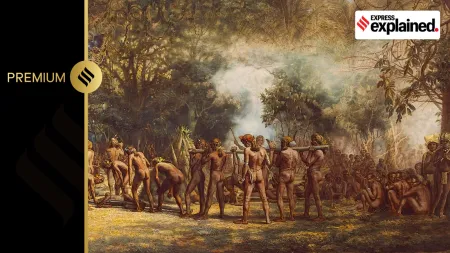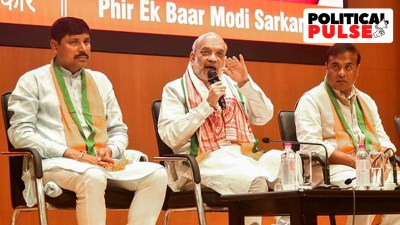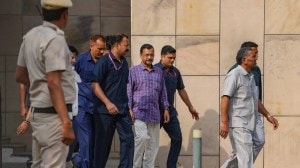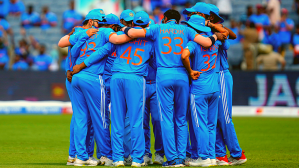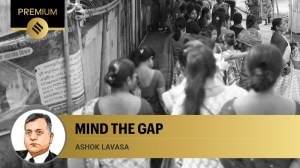- India
- International
Explained: How NAS survey assesses what school students have learnt; what it has found
The NAS is a periodic exercise carried out broadly in alternate years to monitor the health of the country's school education system.
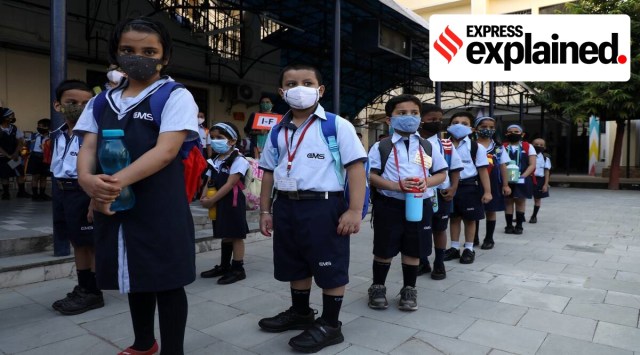 Over the years, the structure of the survey has undergone changes. (File)
Over the years, the structure of the survey has undergone changes. (File)A nationwide survey carried out by the Union Ministry of Education has found that between 2017 and 2021, the literacy and numeracy skills of school students in India worsened considerably across subjects and grades.
The outcomes of the National Achievement Survey (NAS), the latest edition of which was carried out in the shadow of the prolonged closure of schools due to the Covid-19 pandemic, are supposed to guide interventions by authorities across the country to bridge the learning gaps among students enrolled in Classes 3, 5, 8 and 10.
What is the objective of the NAS?
The NAS is a periodic exercise carried out broadly in alternate years to monitor the health of the country’s school education system. It has been designed by the Ministry of Education along with the National Council for Educational Research and Training (NCERT) to provide a snapshot of learning outcomes in key subjects — essentially “what students know and can do” — at the the end of Classes 3, 5, 8 and 10. These classes are generally seen to mark important stages in the development of a child’s cognitive abilities.
Since when has the NAS been carried out?
The first edition of NAS was carried out in 2001. In the beginning, the survey was supposed to be an independent project of the NCERT, but it was soon brought under the ambit of the Sarva Shiksha Abhiyan, the government’s flagship programme to achieve universalisation of elementary education (UEE), which has now been subsumed into the overarching Samagra Shiksha Abhiyan.
Over the years, the structure of the survey has undergone changes. Between 2001 and 2015, each cycle of the survey covered students of just one grade — so, students of Class 3 were covered in 2003, 2007, 2012, and 2015; students of Class 5 were surveyed in 2001, 2005, 2009, and 2014; those of Class 8 were surveyed in 2002, 2007, 2010, and 2015; and students of Class 10 were covered in 2015 and 2018.

What is the current structure of the survey?
In 2017-18, the NAS was redesigned. For the first time, students of all four grades were covered on the same day. Also, instead of states, districts were made units of reporting, leading to a much bigger sample size.
So, until 2017-18, each cycle of NAS had a sample size of 1-2 lakh students; in 2017-18, over 20 lakh students were covered on the same day. The latest (2021) round covered 34 lakh students in 1.18 lakh schools across 720 rural and urban districts.
And what exactly does the NAS assess?
Until 2015-16, the survey assessed the competency of students based on the core curriculum followed by states and UTs. In 2017-18, the focus moved to mapping the progress of learning outcomes as listed under the Right to Education Rules as amended in 2017.
Questions asked by the NAS are framed to assess whether students can read, and carry out simple mathematical operations that are required in daily life. The levels of difficulty and complexity of the questions vary from one grade to another. In the higher classes, the survey also assesses the knowledge acquired by students in areas related to the Constitution of India.
The survey covers schools run by the central and state/UT governments, government-aided schools, and private unaided schools. Language, mathematics and environmental science are assessed in Classes 3 and 5; language, maths, science and social science in Class 8; and maths, social science, science and English are assessed for students in Class 10.
So what does NAS 2021 show?
Compared with 2017 (in 2018 only Class 10 students were assessed), performance has taken a hit across grades. A comparative analysis shows that the national average scores of students across subjects have dropped by up to 47 marks. Consider:
In Class 3, the average scores of students in language, maths and EVS have dropped by 13, 15 and 14 marks respectively.
In Class 5, the scores in language, maths and EVS have dropped by 10, 26 and 27 marks. Class 8 has seen national average scores of language, maths, science and social science come down by 5, 14, 24, and 23 marks respectively. And in Class 10, maths, science, social science, and modern Indian language scores have dropped by 34, 47, 23 and 6 marks respectively. Only the English score has risen by 24 marks.
Are there regional-, gender-, or community-wise variations?
Except for Punjab and Rajasthan, the performance of nearly all states have declined compared to 2017 levels. In terms of 2021 numbers, 14 states and four UTs performed below the national average in Class 3; four UTs and 18 states performed below the national average in Class 5; 16 states and three UTs performed below the national average in Class 8.
There were no marked differences between the scores of boys and girls. There were some variations among communities, though.
For instance, in the case of Class 8 science, the scores of general category students have dropped by 9 marks, as compared to 28, 26, and 19 marks for SCs, STs, and OBCs respectively. There is a distinct rural-urban divide — the maths scores of Class 8 students in rural schools have dropped by 12 marks as against 4 marks shedded by their urban counterparts.
What are the implications of the findings?
According to Rukmini Banerji, CEO of Pratham Foundation which publishes the Annual Status of Education Report (ASER), the NAS findings once again highlight the need for urgent interventions to improve foundational learning levels.
“All data that is coming out is indicating that we need to seriously work on foundational learning and NAS is no exception. It has come at the right time and as the new year school begins, and schools reopen after the summer holidays, the work is cut out for authorities. What NAS says is what we have all been worried about,” Dr Banerji said.
More Explained
EXPRESS OPINION
May 01: Latest News
- 01
- 02
- 03
- 04
- 05






